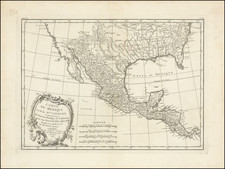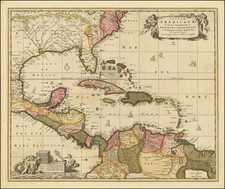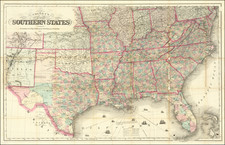Fine contemporary map of the Battlefield of Chattanooga, published by the US Coast Survey shortly after the conclusion of the battle.
The map includes troop positions for both armies, the Union and Confederate field headquarters, roads, railroads, drainage, vegetation and topographical features, plus the names of local residents in the vicinity of the battle.
The credit at the bottom right corner indicates that the map was "Published at the U.S. Coast Survey Office, from surveys made under the direction of Br. Genl. W. F. Smith, Chief Engr., Mil. Div. Miss., by Captains F.W. Dorr and J.W. donn, U.S. Coast Survey and by Maj. Morhardt, Capts. Ligowsky, McDowell, Jenne and Lt.s Boeckh and Dahl, U.S. Vols. and from information relative to the battle funished by Captain Preston, C.F. West, U.S. Coast Survey."
This is apparently the first edition of the plan, with a later edition which does not include the name of Charles Krebs, the lithographer who produced the map. As noted in "The Coast Survey and Army Operations During the Civil War,"
The major contribution of the Coast Survey to the Union armies during the Civil War was the production of topographic maps for tactical and strategic use of campaign and theater commanders. There was great need for mapping as the war showed "in a forcible manner how little accurate information there was with respect to the topography of the interior of many of our middle and southern States...." As many of the Army surveyors and topographers were assigned to line duties during the war [many of whom had served with the Coast Survey prior to the Civil War], "the want of a sufficient number of topographers in the regular army was supplied, in answer to the calls of the War Department and various generals in the field, from the Coast Survey...."
. . .
At least five, and possibly many more Coast Surveyors joined the Army with S.A. Gilbert brevetted Brigadier General for service in western Virginia, Tennessee, and Kentucky; Richard D. Cutts brevetted Brigadier General at the end of the war for service as a colonel on the staff of General Halleck for the duration of the war; and George D. Wise brevetted Brigadier General for service with the Quartermaster Corps including responsibility for all Union Army Ocean Transportation. Ferdinand Hassler, a grandson of the first Superintendent of the Coast Survey and an Aid on the Survey at the beginning of the war, served with Union forces and attained the rank of Major by war's end. Preston C. F. West served on the staff of General William F. "Baldy" Smith for the first three years of the war, rose to Major, and took part in over twenty major engagements.
. . .
The title of this map [of the Battlefield of Chattanooga] displayed two prominent names: "CHATTANOOGA" and "MAJ. GEN. U.S. GRANT." The credits read "Published at the U.S. Coast Survey Office, from surveys made under the direction of Br. Genl. W.F. Smith, Chief Engr Mil. Div. Mis. by Capts F. W. Dorr and J.W. Donn, U.S. Coast Survey, ... and from information relative to the battles furnished by Capt Preston C.F. West, U.S. Coast Survey." Concerning this map, "Baldy" Smith wrote to Captain Orlando Poe: "I forward with this [report] a map large enough to show the strategic movements made before the battle, and also a map giving the battle-field. These maps are mainly due to the exertions of Captain West, U.S. Coast Survey, of my staff, and to the labors of Captains Dorr and Donn..." Reflecting the value of these maps not only for reconstructing military movements but as active tools during the battle, Smith continued: "By them the distances were determined before the battle for the use of artillery, and also the heights of artillery positions occupied by us and the enemy."
(on-line at www.lib.noaa.gov/noaainfo/heritage/coastsurveyvol1/CW2.html )
The United States Office of the Coast Survey began in 1807, when Thomas Jefferson founded the Survey of the Coast. However, the fledgling office was plagued by the War of 1812 and disagreements over whether it should be civilian or military controlled. The entity was re-founded in 1832 with Ferdinand Rudolph Hassler as its superintendent. Although a civilian agency, many military officers served the office; army officers tended to perform the topographic surveys, while naval officers conducted the hydrographic work.
The Survey’s history was greatly affected by larger events in American history. During the Civil War, while the agency was led by Alexander Dallas Bache (Benjamin Franklin’s grandson), the Survey provided the Union army with charts. Survey personnel accompanied blockading squadrons in the field, making new charts in the process.
After the Civil War, as the country was settled, the Coast Survey sent parties to make new maps, employing scientists and naturalists like John Muir and Louis Agassiz in the process. By 1926, the Survey expanded their purview further to include aeronautical charts. During the Great Depression, the Coast Survey employed over 10,000 people and in the Second World War the office oversaw the production of 100 million maps for the Allies. Since 1970, the Coastal and Geodetic Survey has formed part of the National Oceanic and Atmospheric Administration (NOAA) and it is still producing navigational products and services today.









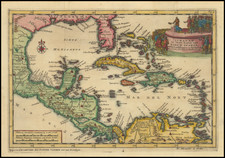
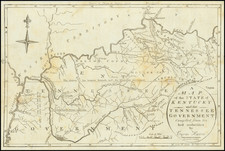
![[First Map of the Mississippi River] Carte de la decouverte faite l'an dans l'Amerique Septentrionale](https://storage.googleapis.com/raremaps/img/small/93571.jpg)
